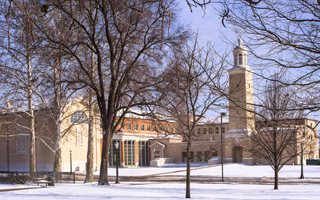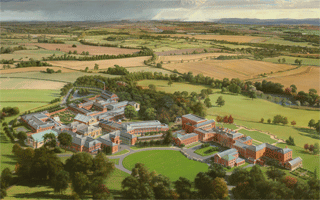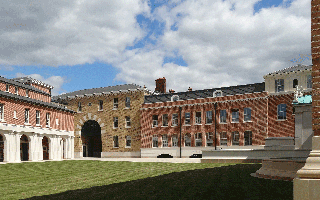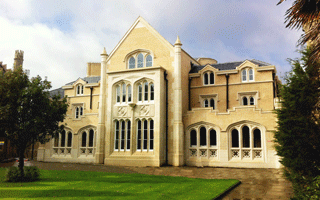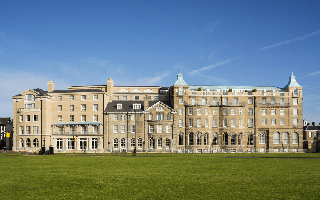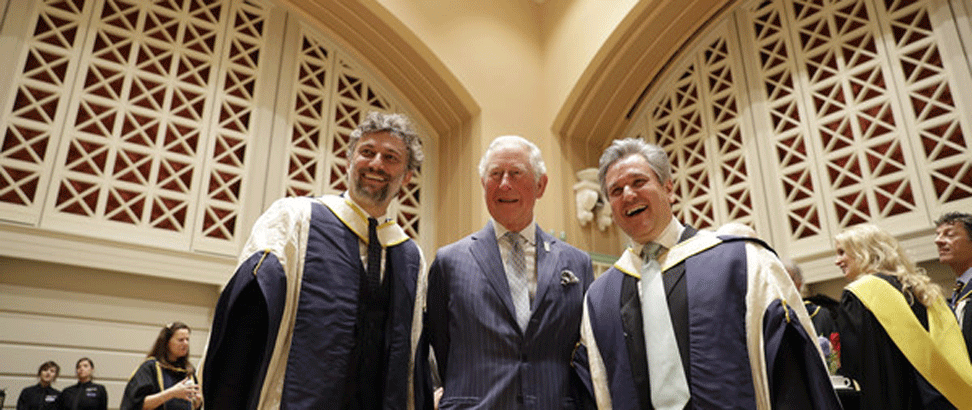
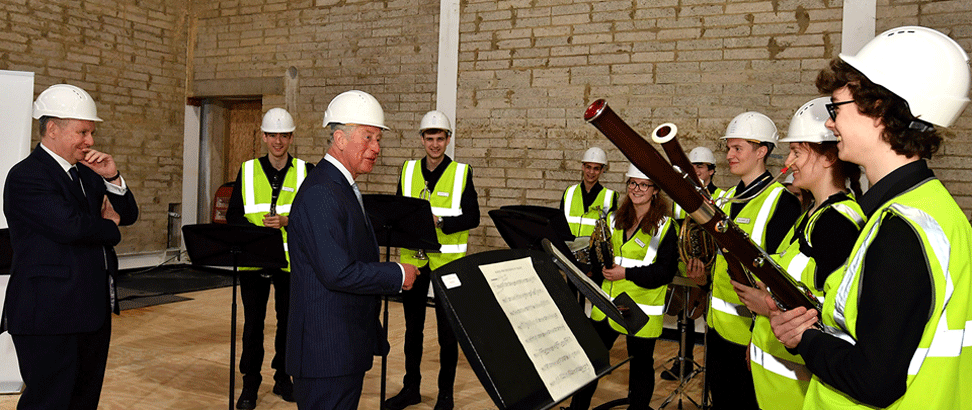
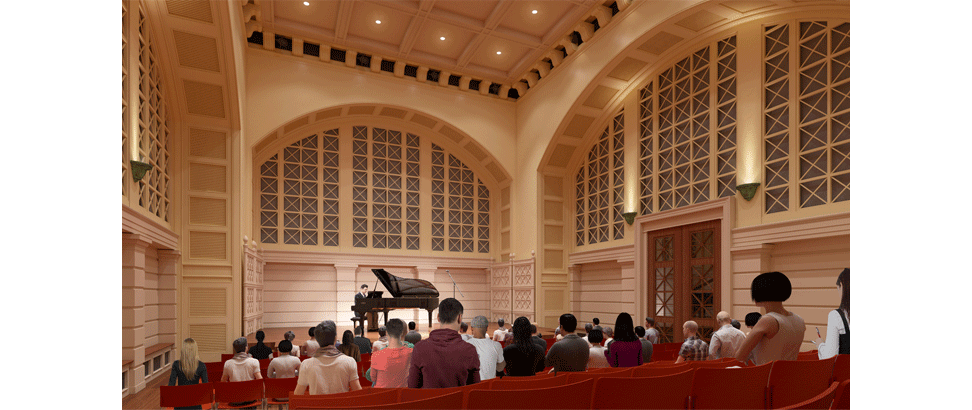
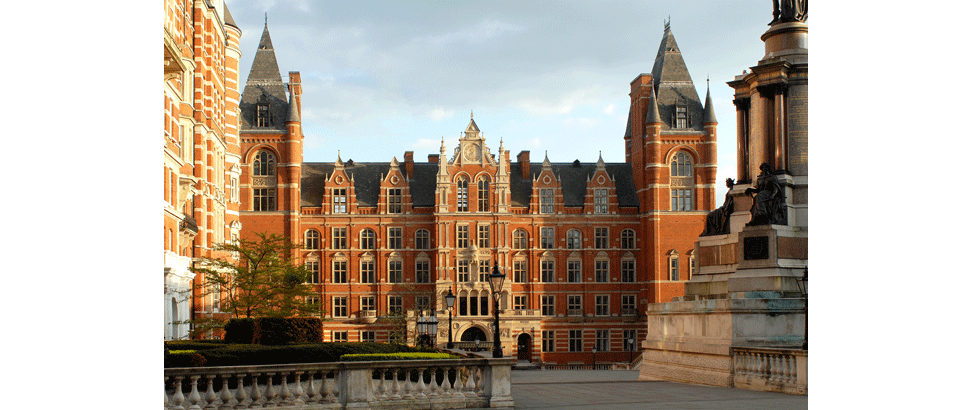
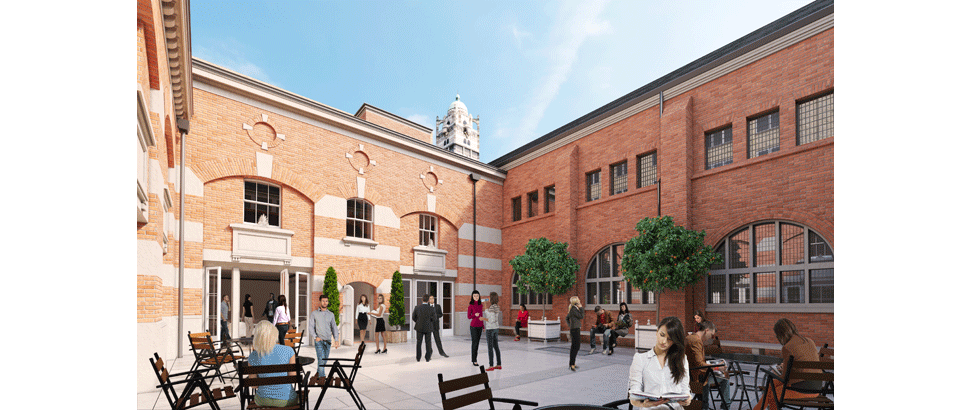
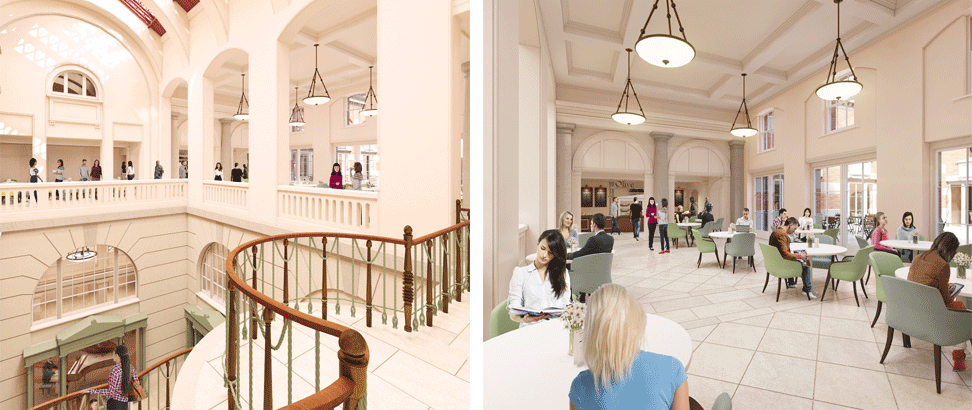
THE PRINCE OF WALES, PRESIDENT OF ROYAL COLLEGE OF MUSIC,
ATTENDED THE RCM ANNUAL AWARDS CEREMONY AND CONFERRED THE AWARDS
The President’s Visit to the RCM is always a significant occasion, but this year’s HRH visit comes right before the new More Music: Reimagining the Royal College of Music’s East Courtyard Development officially opens. The building works have come a long way since last year's visit when His Royal Highness The Prince of Wales listened to RCM students in a special performance of Haydn’s March for the Prince of Wales in hardhats.
Founded in 1882, the Royal College of Music is a world-leading conservatoire training gifted students from all over the world as performers, conductors and composers. The College’s two original buildings by Arthur Blomfield and Sidney Smith were designed with a clear hierarchy that put the entrance of the College on axis with the Royal Albert Hall opposite, the centrepiece of ‘Albertropolis’, designed by the Prince Consort himself in the mid-19th century. As the College expanded, however, with piecemeal additions throughout the 1960s and 1970s, this organisation linking the school with its august surroundings was lost. In 2014, John Simpson Architects won the competition to make a masterplan of the College campus in order to satisfy the requirements of the expanded College whilst returning the centre of gravity to its previous location. The result was a masterplan that centres on a new external court at ground level, accessed from an enlarged Entrance Hall and soaring triple-height foyer. Leading off from these core features, the project also includes two new multi-functional performance venues, a home for the Museum of Music – boasting one of the most significant collections of historic instruments in the world, breakout areas for audiences with café, bar and restaurant facilities, as well as a new digital recording studio and additional practice/teaching rooms. Not only will these new spaces address the existing changes in floor-level, so that all visitors and students can navigate the College with ease, but incorporate new state-of-the-art facilities designed to cater for every type of music, thus further enhancing the College’s global reach and reputation.
Building on the heritage and tradition of the College, the design fashions an environment that is at once both timeless, blending with the much-loved architecture of Smith and Blomfield, and harmonious, complementing its more modern surroundings; that re-establishes a balance between indoor and outdoor, public and private spaces, making good the circulation for the first time since the College’s construction. In all, this ambitious scheme serves a number of outcomes. Not only will it enhance the College’s status as one of the premier destinations for world-class musical education, strengthening it as a cultural venue of national and international significance, but creates a truly inspirational environment for the visiting musicians, professors and students who work there, enabling them, like the building, to perform at their best.
